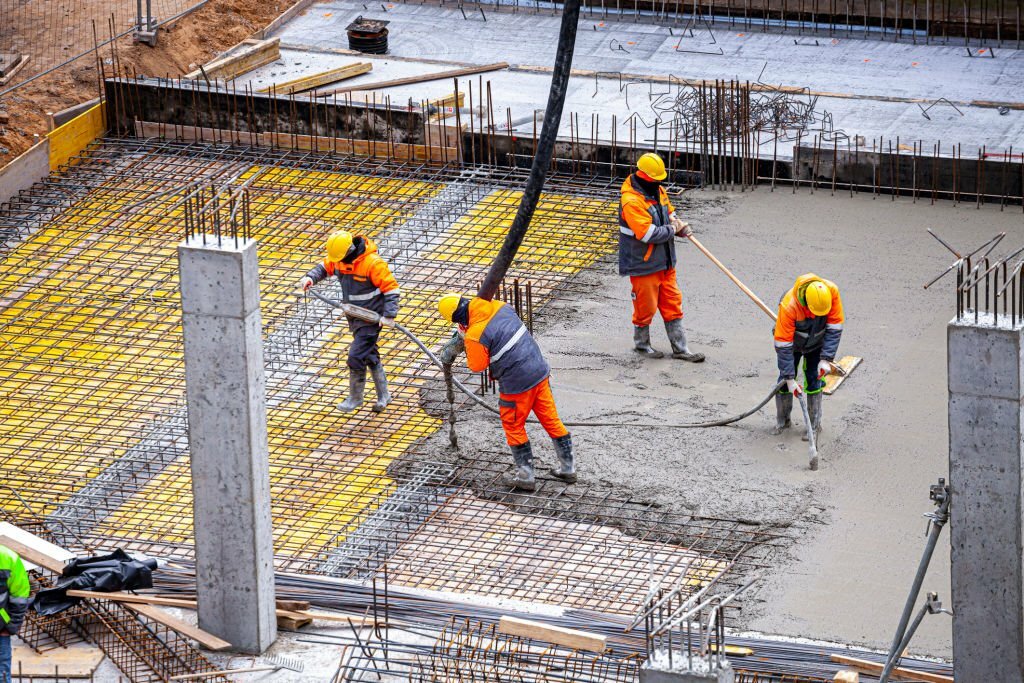Introduction:

In the ever-evolving landscape of construction, the decision to opt for renting or purchasing construction equipment stands as a critical determinant of project success. This pivotal choice holds the potential to wield a profound impact on project outcomes, influencing not only efficiency but also the financial landscape of the endeavor. This comprehensive guide serves as a beacon, illuminating the intricate considerations surrounding the dichotomy of renting and buying construction equipment. It endeavors to unravel the intricacies embedded in each option, offering a nuanced exploration of the associated pros and cons. By delving into the details of both alternatives, the aim is to empower contractors and project managers with the knowledge necessary to make astute decisions aligned with the unique needs and circumstances of their projects. Recognizing that each construction project is a distinct entity with its own set of challenges and requirements, this guide seeks to provide a tailored understanding of the implications tied to the choice between renting and buying equipment, fostering informed decision-making and ultimately contributing to the overall success of construction endeavors.
The Advantages of Renting Construction Equipment:

Cost Efficiency: Choosing rental equipment brings forth a significant advantage by alleviating the burden of substantial upfront costs. This proves particularly advantageous for short-term projects or tasks demanding specialized machinery, where committing to a purchase may seem financially impractical. Opting for rental solutions offers a financially savvy alternative, providing immediate access to the required equipment without the weighty initial investment. This flexibility in resource allocation enhances budget management, allowing project managers to channel funds more efficiently and strategically. By circumventing the need for a substantial capital outlay, renting becomes a practical and economical choice, enabling projects to proceed seamlessly and within budget constraints, while ensuring that the necessary machinery is readily available for the specific duration it is required.
Maintenance Relief: In the realm of renting construction equipment, a noteworthy advantage lies in the comprehensive packages that often include maintenance services within rental agreements. This added benefit serves as a crucial relief for project teams by mitigating the burden of unforeseen repair costs and the associated downtime. Rental arrangements typically encompass routine maintenance, ensuring that the equipment is consistently monitored, serviced, and kept in optimal condition. This proactive approach to maintenance significantly reduces the risk of disruptions during critical project phases, where any downtime can have cascading effects on timelines and overall project efficiency. The inclusion of maintenance services not only promotes a seamless workflow but also instills confidence in project managers, allowing them to focus on project execution without the looming concerns of unexpected equipment failures. It underscores the convenience and peace of mind that come with the rental option, making it an attractive proposition for projects where operational continuity is paramount.
Access to Latest Technology: In the dynamic landscape of the construction industry, characterized by rapid evolution and continuous technological advancements, opting for rental equipment emerges as a strategic choice. The essence of this advantage lies in the immediate access it affords to the latest and most advanced machinery, all without the long-term commitment of ownership. By embracing the rental route, your project gains a competitive edge through the incorporation of cutting-edge technology. This not only enhances operational efficiency but also elevates overall productivity. Staying abreast of the latest innovations becomes more feasible, fostering a forward-looking approach to project execution. The flexibility to adapt and utilize state-of-the-art equipment without the encumbrance of ownership commitments positions renting as a dynamic solution, particularly for projects where staying at the forefront of technological advancements is imperative for maintaining a competitive edge and ensuring the successful realization of project objectives.
The Downsides of Renting Construction Equipment:

Long-Term Costs: Despite the initial allure of cost-effectiveness associated with renting, a nuanced consideration emerges when contemplating the cumulative expenses over an extended period. While renting may present an attractive solution for short-term projects, project managers must judiciously evaluate the duration of their endeavors. Over an extended timeframe, the aggregate costs of rental fees can gradually surpass the upfront expense associated with purchasing equipment. This delineation underscores the importance of a strategic and foresighted approach to decision-making. Project managers should conduct a thorough assessment, considering not only the immediate budgetary constraints but also the long-term financial implications. Understanding the unique financial landscape of the project and its duration is pivotal in determining whether the adaptability and short-term advantages of renting align harmoniously with the overall budget constraints. It prompts a contemplative examination of the project’s lifecycle, ensuring that the chosen approach resonates with both immediate financial considerations and the sustainable fiscal health of the project over time. This balanced evaluation empowers project managers to make informed choices, aligning the selected equipment procurement strategy with the project’s specific needs and the overarching financial framework.
Limited Customization:
The potential drawback of renting construction equipment lies in its inherent limitation of customization to the specific needs of a project. Unlike purchased equipment, which can be tailored to precise project requirements, rented machinery might lack the bespoke features essential for optimal performance. This absence of customization can have a tangible impact on overall efficiency, particularly in scenarios where specialized functionalities are paramount. Construction projects often demand a unique set of features to address specific challenges, and the inability to customize rented equipment may result in suboptimal performance. Project managers must weigh the trade-off between the flexibility of renting and the tailored efficiency of ownership, ensuring that the selected approach aligns seamlessly with the project’s distinct requirements and the imperative for optimized functionality. This consideration underscores the need for a careful evaluation of project specifications and the potential impact of equipment customization on the overall success and efficiency of the construction endeavor.
The Benefits of Buying Construction Equipment:

Long-Term Investment: Choosing to purchase construction equipment transcends the immediate acquisition of machinery; it constitutes a strategic long-term investment. This approach proves particularly advantageous for projects characterized by consistent and predictable machinery needs over an extended period. While the initial costs of ownership may appear high, they are offset by the potential for prolonged use without incurring ongoing rental expenses. This financial calculus positions ownership as a judicious choice, especially when the machinery is integral to the core operations and longevity of the project. As the project unfolds, the upfront investment in equipment pays dividends through its continuous availability, eliminating the recurrent costs associated with renting. This long-term vision aligns seamlessly with projects that demand sustained and reliable access to specialized machinery, ensuring not only fiscal prudence but also operational continuity and efficiency throughout the project lifecycle.
Customization: The ownership of construction equipment bestows a significant advantage in terms of flexibility and customization, allowing project managers to tailor machinery according to the unique requirements of a project. This bespoke approach to equipment optimization is a catalyst for enhancing overall efficiency, as it enables the fine-tuning of machinery for specific tasks and varying project conditions. The ability to customize equipment stands as a pivotal advantage for projects with distinctive demands, where off-the-shelf solutions may fall short of meeting the intricacies of the job at hand. This tailored adaptability ensures that the equipment aligns seamlessly with the project’s objectives, contributing to heightened performance, increased productivity, and more streamlined execution of tasks. In essence, ownership not only signifies possession but also empowers project managers with the authority to shape and mold their equipment fleet to meet the precise and evolving needs of their projects.
Asset Value: The prudent maintenance of construction equipment not only ensures its optimal functionality but also establishes it as a resilient asset capable of retaining value over time. This enduring value transforms purchased machinery into a valuable resource that holds the potential for resale or repurposing in future projects. The intrinsic longevity of well-maintained equipment amplifies its utility beyond the confines of a singular project, contributing to a sustainable and cost-effective approach to resource management. The prospect of recouping a portion of the initial investment through resale adds another layer of financial benefit to the decision to buy equipment. This cyclical nature of ownership, where equipment continues to yield returns even after its primary use, underscores the multifaceted advantages of ownership, creating a ripple effect of financial benefits that extend well beyond the initial acquisition phase.
Drawbacks of Buying Construction Equipment:

High Initial Costs: Undoubtedly, the primary impediment to the acquisition of construction equipment through ownership lies in the formidable obstacle of high upfront costs. This financial barrier poses a substantial challenge, particularly for smaller businesses or projects operating within the confines of limited capital. The considerable investment required for purchasing machinery demands a strategic and meticulous approach to financial planning. Careful consideration and evaluation of the budgetary constraints are imperative to navigate this initial fiscal hurdle effectively. Small businesses, in particular, may find themselves grappling with the dilemma of resource allocation, balancing the necessity of acquiring essential equipment with the need to maintain overall financial health. Successful management of these upfront expenses involves not only a clear understanding of the financial landscape but also the implementation of astute financial strategies, such as securing financing options or exploring cost-effective alternatives, to ensure a judicious and sustainable approach to equipment procurement.
Maintenance Responsibility: Ownership of construction equipment confers a dual responsibility upon owners, entailing both control over maintenance schedules and the financial burden of associated expenditures. While the autonomy to dictate maintenance timelines is a distinct advantage, it comes hand in hand with the responsibility of shouldering the costs of repairs and routine servicing. This financial commitment extends to unforeseen expenditures, adding a layer of complexity to the ownership equation. The imperative for regular upkeep becomes paramount in this context, not merely as a measure to ensure the longevity of equipment but also as a proactive strategy to maintain optimal performance. The dichotomy of control and financial accountability underscores the importance of a comprehensive maintenance strategy, blending scheduled servicing with the readiness to address unforeseen issues. Successful ownership necessitates a proactive and strategic approach to maintenance, balancing the benefits of control with the fiscal responsibility inherent in ensuring the sustained functionality of the acquired equipment.
Key Considerations for Decision-Making:
- Project Duration:
- Short-Term Projects: Renting is often the more economical choice for projects with a limited duration.
- Long-Term Projects: Ownership becomes more financially viable for projects with consistent and prolonged equipment needs.
- Financial Resources:
- Evaluate available financial resources to determine whether upfront costs can be managed for purchasing or if spreading costs through renting is more feasible.
- Flexibility Needs:
- Consider the flexibility required to adapt to changing project demands. Renting offers flexibility in upgrading equipment as needed, while ownership allows for customization.
- Resale Value:
- Assess the potential resale value of purchased equipment to understand its long-term financial impact. Well-maintained equipment holds its value and can be a valuable asset.
Conclusion:
The decision to rent or buy construction equipment is multifaceted and depends on various factors unique to each project. By carefully weighing the pros and cons outlined in this guide, project managers can make informed decisions that align with their goals, ensuring efficient, cost-effective, and successful construction processes. Whether it’s the flexibility of renting or the long-term investment of ownership, understanding these dynamics is essential for navigating the complex terrain of construction project management.

